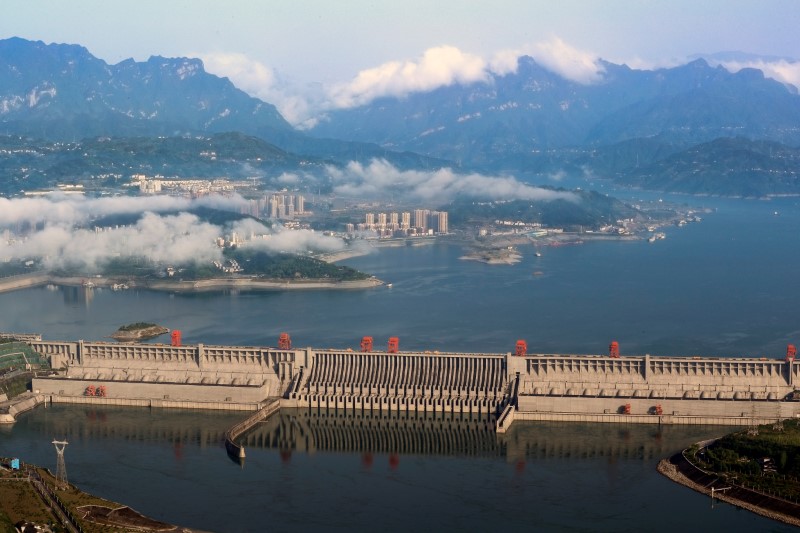 © Reuters. FILE PHOTO – A general view shows the Three Gorges Dam on the Yangtze River in Yichang, Hubei province
© Reuters. FILE PHOTO – A general view shows the Three Gorges Dam on the Yangtze River in Yichang, Hubei provinceSHANGHAI (Reuters) – China has launched a 100 billion yuan ($15.58 billion) fund to support economic integration and coordination in the Yangtze river delta region, state news agency Xinhua said, part of wider state efforts to break down administrative barriers.
The Yangtze River Delta Collaborative Advantage Fund was launched in Shanghai, backed by central government-run enterprises, financial institutions and a number of regional state-owned and private firms, Xinhua reported on Saturday.
It said 10 billion yuan would be made available in the first phase and would be used on “hard technology” projects that would help integrate the region’s industries.
Governments in the Yangtze delta, which includes Shanghai, the manufacturing hubs of Jiangsu and Zhejiang and Anhui province, are aiming to improve cross-boundary economic coordination following a similar initiative in the Beijing-Tianjin-Hebei region in China’s north.
China has been trying to break down a “fortress economy” mentality among local governments, which have traditionally been under heavy state pressure to grow as quickly as possible, sometimes at the expense of their neighbors.
This has led to severe overcapacity and contributed to pollution and congestion in China’s biggest cities.
As many as 11 cities in the Yangtze delta region are competing to become car production bases, according to delegates to China’s parliament in March. Another 12 are focusing on electronic communications and eight on petrochemicals, a situation they said could lead to more overcapacity and irrational competition in the sectors.
The city of Shanghai is also bursting at the seams, with its total population rising from 13 million in 1990 to 24 million in 2017.
Fusion Media or anyone involved with Fusion Media will not accept any liability for loss or damage as a result of reliance on the information including data, quotes, charts and buy/sell signals contained within this website. Please be fully informed regarding the risks and costs associated with trading the financial markets, it is one of the riskiest investment forms possible.
Source: Investing.com



























